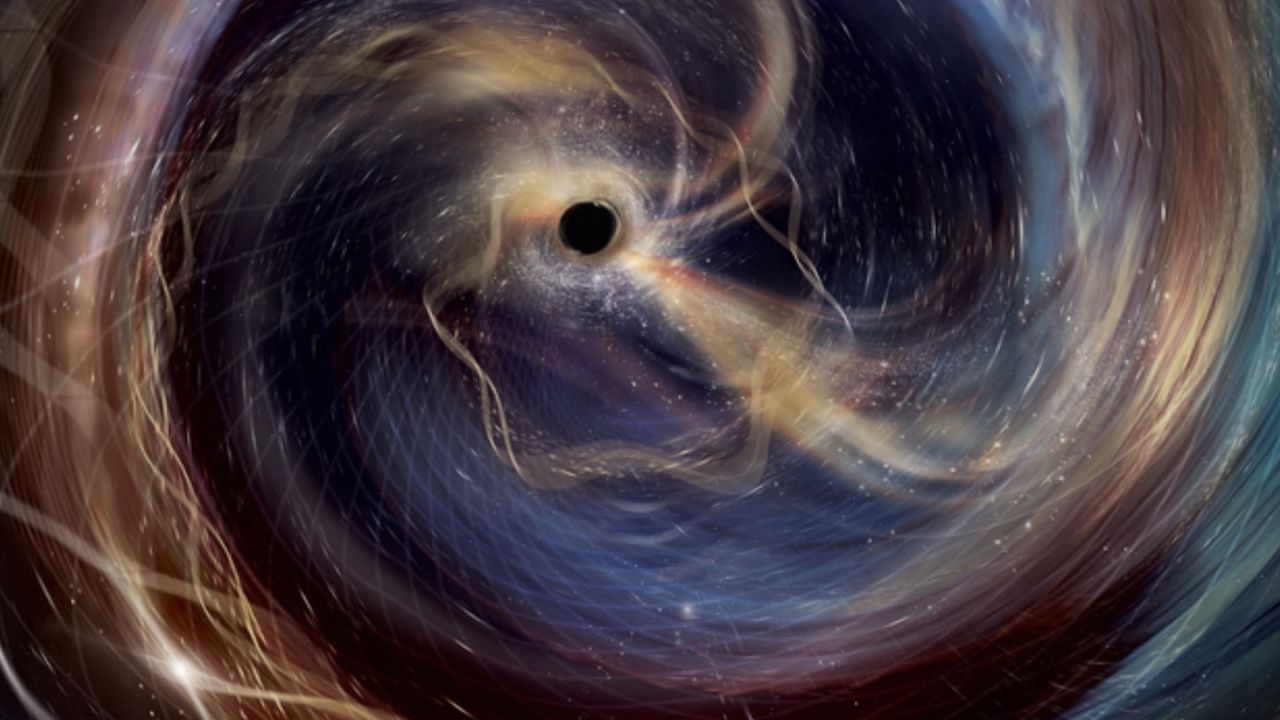
News
October 31, 2025
Physicists detect rare 'second-generation' black holes that prove Einstein right... again
Physicists have analyzed two enormous black hole mergers that happened one month apart and have come up with tantalizing evidence that rare "second-generation" black holes were involved.
**Physicists have analyzed two enormous black hole mergers that happened one month apart and have come up with tantalizing evidence that rare "second-generation" black holes were involved.**
In a stunning confirmation of Einstein's theories, physicists have announced the detection of compelling evidence suggesting the existence of "second-generation" black holes. This groundbreaking discovery stems from the analysis of two colossal black hole mergers, detected just a month apart, that appear to defy conventional astrophysical models. The findings provide yet another powerful validation of Einstein's theory of general relativity and offer a glimpse into the complex and dynamic processes shaping the universe.
Black holes, regions of spacetime with gravity so intense that nothing, not even light, can escape, are typically formed from the collapse of massive stars. However, the newly observed mergers point towards a more intricate formation process. Scientists believe that these mergers involved "second-generation" black holes – black holes that were themselves formed from the merger of two or more "first-generation" black holes.
Imagine a scenario where two massive black holes spiral inward and collide, creating a single, even larger black hole. This new, larger black hole could then, in turn, merge with another black hole, creating a "second-generation" black hole. Such events are incredibly rare and challenging to detect because they require specific conditions and a high density of black holes in a particular region of space.
The evidence for these second-generation black holes comes from the characteristics of the gravitational waves emitted during the mergers. Gravitational waves are ripples in spacetime caused by accelerating massive objects, like colliding black holes. By meticulously analyzing the patterns and frequencies of these waves, physicists can deduce the masses and spins of the merging black holes. The data from these two mergers showed that the resulting black holes were significantly more massive than what could be explained by the merger of two "first-generation" black holes alone, suggesting the involvement of a pre-existing, merged black hole.
This discovery is a significant step forward in our understanding of black hole formation and evolution. It provides valuable insights into the environments where black hole mergers are most likely to occur, such as dense star clusters or the centers of galaxies. Further research and analysis of similar events will help to refine our models of black hole populations and provide a more complete picture of the universe's gravitational landscape. The detection of these second-generation black holes opens a new window into the universe, allowing us to probe the most extreme environments and test
In a stunning confirmation of Einstein's theories, physicists have announced the detection of compelling evidence suggesting the existence of "second-generation" black holes. This groundbreaking discovery stems from the analysis of two colossal black hole mergers, detected just a month apart, that appear to defy conventional astrophysical models. The findings provide yet another powerful validation of Einstein's theory of general relativity and offer a glimpse into the complex and dynamic processes shaping the universe.
Black holes, regions of spacetime with gravity so intense that nothing, not even light, can escape, are typically formed from the collapse of massive stars. However, the newly observed mergers point towards a more intricate formation process. Scientists believe that these mergers involved "second-generation" black holes – black holes that were themselves formed from the merger of two or more "first-generation" black holes.
Imagine a scenario where two massive black holes spiral inward and collide, creating a single, even larger black hole. This new, larger black hole could then, in turn, merge with another black hole, creating a "second-generation" black hole. Such events are incredibly rare and challenging to detect because they require specific conditions and a high density of black holes in a particular region of space.
The evidence for these second-generation black holes comes from the characteristics of the gravitational waves emitted during the mergers. Gravitational waves are ripples in spacetime caused by accelerating massive objects, like colliding black holes. By meticulously analyzing the patterns and frequencies of these waves, physicists can deduce the masses and spins of the merging black holes. The data from these two mergers showed that the resulting black holes were significantly more massive than what could be explained by the merger of two "first-generation" black holes alone, suggesting the involvement of a pre-existing, merged black hole.
This discovery is a significant step forward in our understanding of black hole formation and evolution. It provides valuable insights into the environments where black hole mergers are most likely to occur, such as dense star clusters or the centers of galaxies. Further research and analysis of similar events will help to refine our models of black hole populations and provide a more complete picture of the universe's gravitational landscape. The detection of these second-generation black holes opens a new window into the universe, allowing us to probe the most extreme environments and test
Category:
Technology